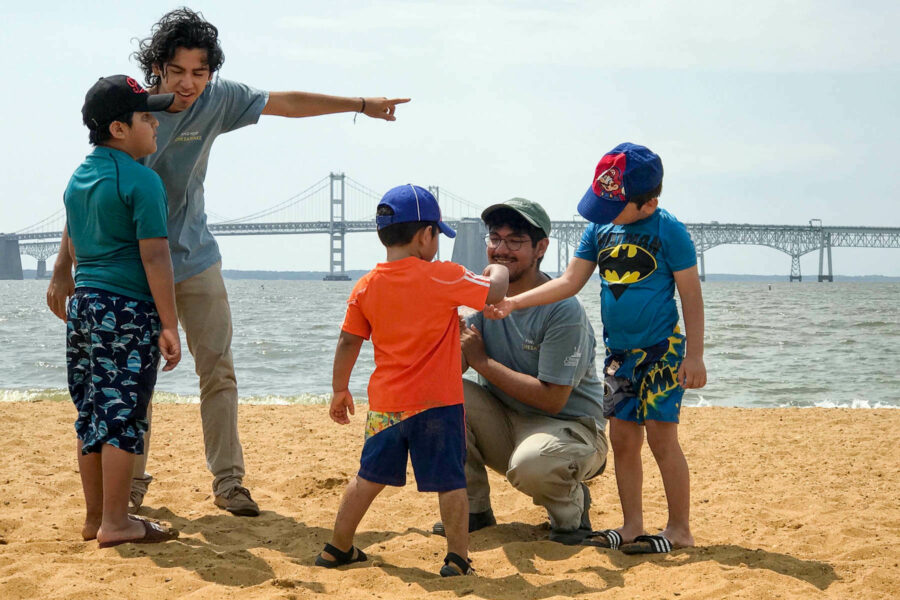Sandy Point State Park embraces its changing visitorship
Park introduces new bilingual interpretive program

With breathtaking beaches, scenic picnic venues and a wide range of nature programming, Sandy Point State Park is one of Maryland’s most treasured summertime destinations for hikers, bikers and other outdoor recreators.
Since the park opened in 1952, its staff has worked to meet the needs of its visitors. However, those needs are evolving, and to make the park accessible to all, so is the park.
A 2015 visitor survey conducted by the Hispanic Access Foundation found that over 80% of Sandy Point’s visitors are of Latin American origin or descent.
“This is a huge change in demographics from just a few years ago,” said Gabrielle Roffe, the Project and Partnership Coordinator at Chesapeake Conservancy. “Hispanic communities use the park in different ways than your more traditional hikers and bikers, and we wanted to develop a program that met these needs.”
The changing demographics at Sandy Point represent a growing trend in the Washington Metropolitan Area. Roffe says that over the last five years, county and state parks throughout the region have seen increases in their Hispanic visitorship, reflecting the area’s increasingly diverse population.
That’s why, in summer 2019, Sandy Point piloted a bilingual interpretive outreach program, marking the beginning of an effort to address the needs of the changing community. The goal of the program was to offer translation services and programming aimed at engaging the park’s Hispanic visitors.
Engaging the community
The program, which was piloted by Chesapeake Conservancy and funded by the National Park Service (NPS), began with a search for bilingual interpreters. The interpreters would be stationed at Sandy Point during the park’s busy summer months to help bridge the language gap between the park’s naturalists and the Hispanic community.
“I found out about the program from the Spanish film professor at my college,” said Daniel Salomon, one of the park’s two bilingual interpretive outreach assistants. “I was excited about the idea of using my Spanish-speaking background to help reach out to the Hispanic community at Sandy Point.”
The interpreters did more than just translate. Salomon and his co-worker, Julian Segovia, developed programming aimed at engaging the park’s increasingly diverse community. “We wanted to tap into our heritage to help form real relationships with the community,” said Salomon.
Salomon and Segovia planned outreach events inspired by Hispanic culture, such as “Pintando la Bahía” (Painting the Bay), where visitors were invited to paint on the park’s beaches, and “Música Reciclada” (Recycled Music), an event that gave visitors the opportunity to build and play instruments made from recycled material.
An opportunity for education
Roffe says the program also created an opportunity to connect with a community that is often excluded from environmental discourse. “It’s given us the chance to educate Hispanic communities about climate change, stewardship and what it means to be a part of the Bay watershed.”
Environmental engagement plays an important part in Hispanic culture. Whether it’s playing soccer, grilling outdoors or picnicking with family and friends, Roffe says that the Hispanic community is always looking for ways to establish a connection to nature.
“Hispanic communities want to be engaged,” said Roffe. “When you reframe environmental issues to talk about public health and public safety—issues and values that are close to home—that’s when you see a spark.”
Roffe hopes that the bilingual program, which has already received funding for summer 2020 through NPS, is extended to other parks where there is a similar need. “We want the Hispanic community to feel like they have ownership over their parks. It’s public land—it’s for everyone.”

Comments
There are no comments.
Thank you!
Your comment has been received. Before it can be published, the comment will be reviewed by our team to ensure it adheres with our rules of engagement.
Back to recent stories